The interior staircase in a house or apartment will hardly go unnoticed. It is an architectural element of considerable size that cannot be neglected. That is why the staircase is treated as possible access to the upper level and as a decorative element. Thinking back to the past, the staircase was really a central element. It was imposing and often showed the social position of the owner. Even nowadays, these interior staircases are given the attention they deserve, as firms specializing in such products and work are now doing the work.
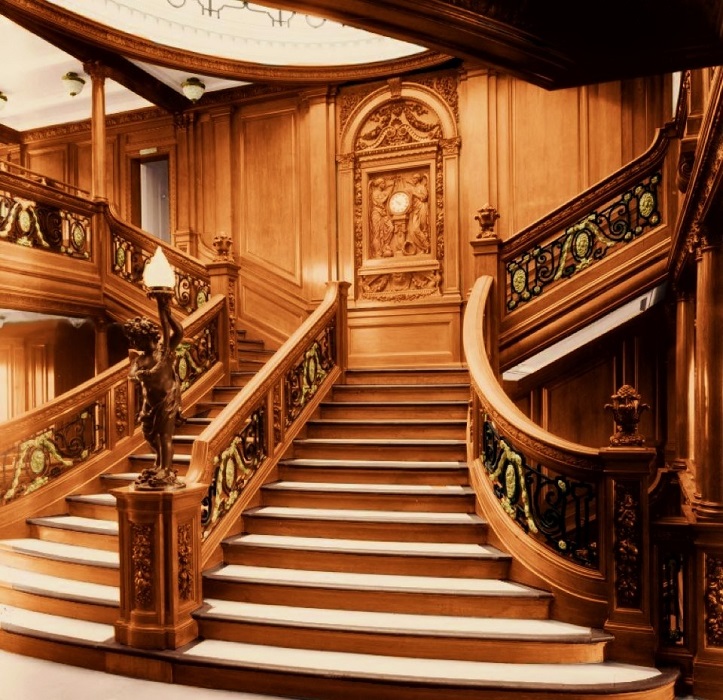
One style that has been increasingly adopted in home decoration lately is minimalist, and staircases have also followed the trend. While in other styles the staircase has many eye-catching elements - handrail, handrail, balustrade, step, riser - in minimalist staircases the steps are the central element.
Features of minimalist style. What is a minimalist staircase like
In minimalist style, less is more. It is a style that goes to the essence by removing elements considered unnecessary (colors, shapes, textures, non-essential construction elements). The aim is to emphasize the main element of the object, the room, the overall picture, making it the focal point.
From a visual point of view, the style is meant to bring tranquility, calm and to direct attention and thoughts to the essence, to the essence of things. The minimalist style emerged several decades ago in Switzerland and quickly spread to all fields: architecture, design, music, literature, literature, painting.
Minimalist style on interior stairs means steps. They are the central element, what really matters. To get to the upper level you need to climb the steps, nothing takes precedence over that. The whole construction is focused on the steps and that's where the beauty comes from. The stairs seem to float in the room like a fairy-tale staircase to a fantasy world.
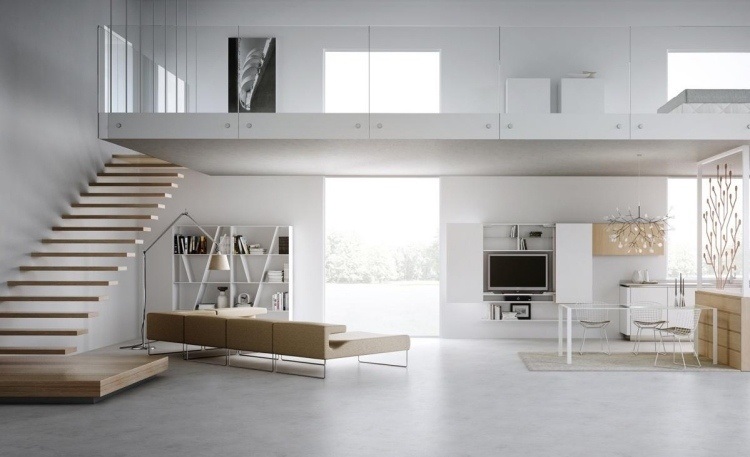
Different ways of making stairs
Although with this reduction to the essentials it seems impossible to make minimalist staircases in more than one way, there are still plenty of designs. I will list a few of them, describing them briefly. It would be very difficult (more precisely, impossible) for me to say in detail how the stairs have been practically realized. Although it all seems to be reduced to a few steps, there are well-chosen supporting elements and thorough strength calculations so that the stairs are safe to use.
Here are some models:
- The steps are supported by a central metal structure that is as discreet as possible to be almost invisible;
- are wall-mounted support elements mounted in the wall, upwards at equal distances and the steps are mounted on them;
- The tread is supported in 2 parts, one element fixed to the beams and the other in the form of a thin metal wire hanging from the ceiling;
- The step supported from 2 parts, one element fixed in the wall, and on the opposite side the grip is a simple, almost invisible glass railing;
- a central structure, as simple and discreet as possible, supporting steps arranged in a spiral.
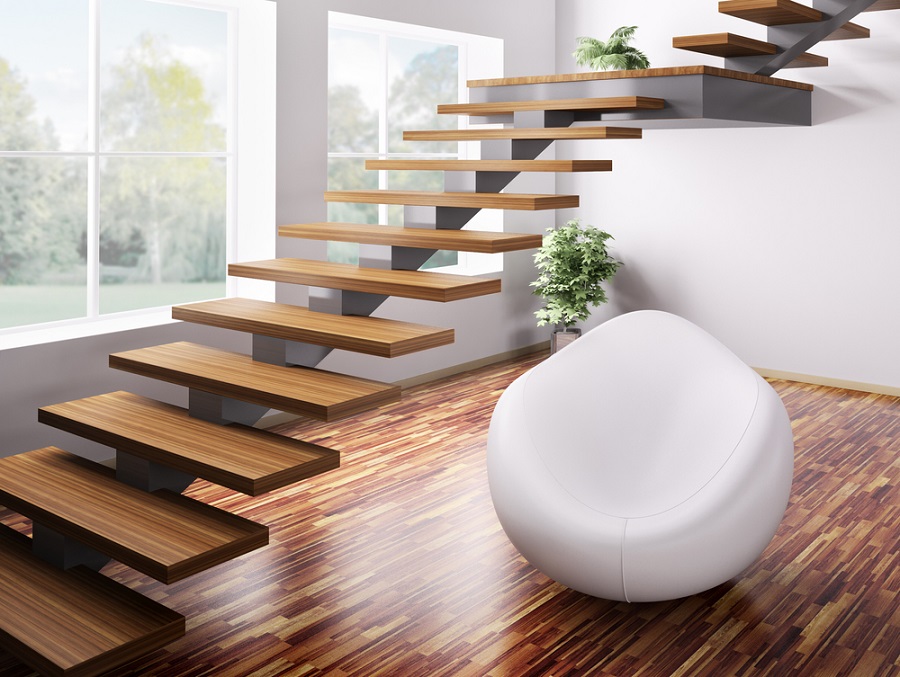
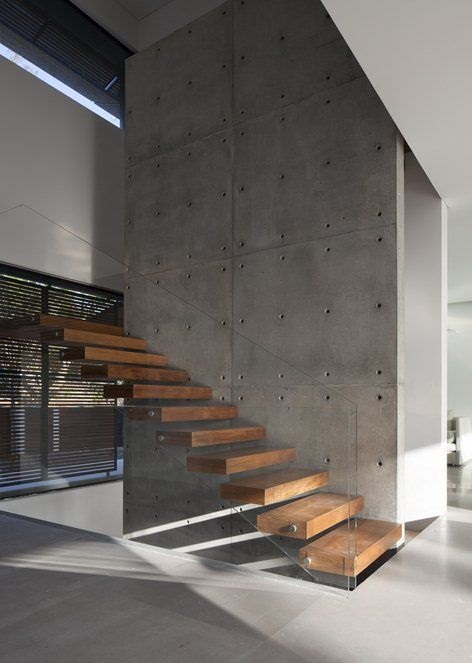
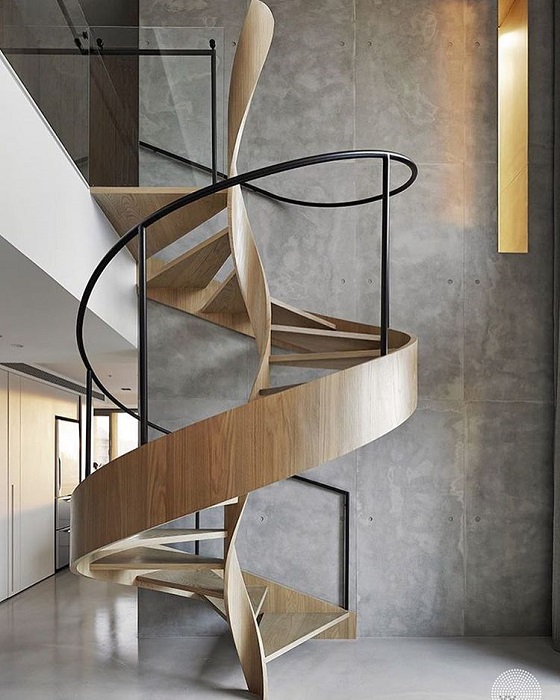
While we're on the subject of spiral staircases, I think the earliest minimalist staircase, made long before the style came into being, is spiral staircase in Lorreto Chapel, Santa Fe, USA. It's a fascinating staircase that seems to float. In fact, it's one of the world's most famous staircases, and the subject of a movie. It was built without a central support pillar, is 6 m high and can be turned through 360º twice. These two turns, which are very difficult to achieve without a central support even today, let alone almost 200 years ago, have fueled and continue to fuel the legend that the staircase is a divine achievement.
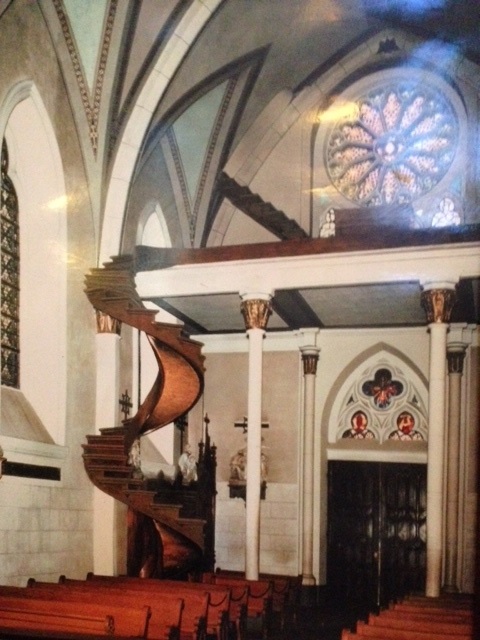
Minimalist stairs with central element - the steps
It's the treads that catch the eye with minimalist staircases, and if they're made of wood, the quality of the wood and the finish become essential. As the central element, everything matters: the essence of the wood, the thickness and shape of the treads, the color, the special effects achieved by the finish, the oil or varnish they are coated with.
Wood is chosen in the same way as flooring or floorboards. It has to be hard-wearing, as it is subject to greater wear and tear than a simple piece of furniture. Hard woods are preferred - oak, fag, frasin, acacia. Natural elements such as knots, coloring and cracks can further enhance the step.
If you decide to make such a staircase (or you need steps for any kind of interior staircase) you can choose the steps at Dippanels. They are made of solid wood panels - oak or beech - in various sizes and designs. You can even choose vintage designs.
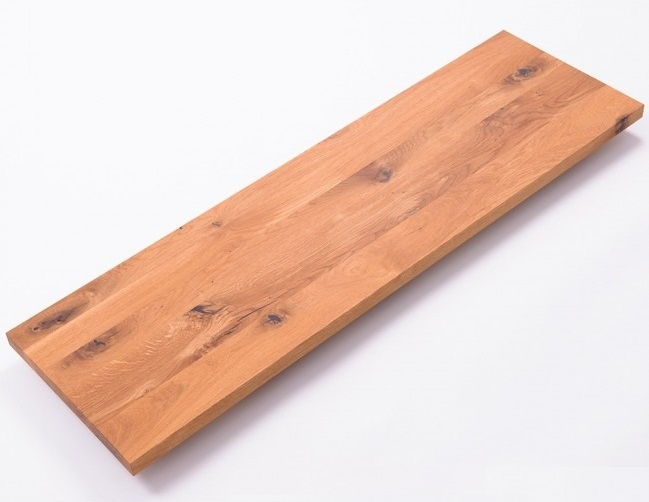
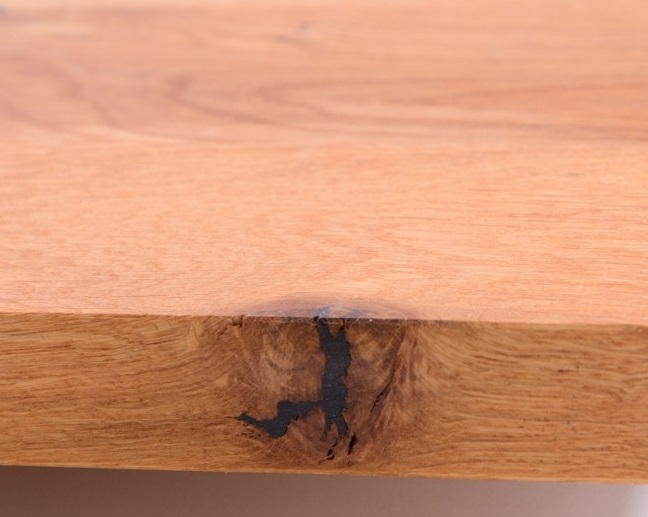
Steps can be finished with oil or traffic-resistant varnish. A good choice, given that this is wood with high natural resistance, is oil. It leaves the wood looking natural and allows it to exchange moisture with the environment, a natural process for wood. In addition, because it does not film, any scratches or cracks are not visible and repair is easy.
A minimalist staircase doesn't fit everywhere, but if the style of the house allows it, it can be a very special eye-catcher. And something leads me to believe that all your friends will enjoy going upstairs on staircases with floating steps, just like in childhood fairytales.
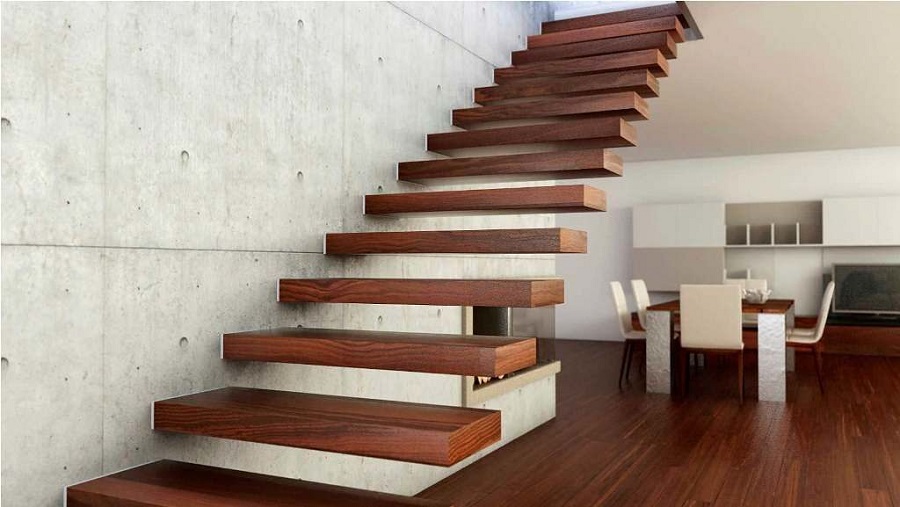
























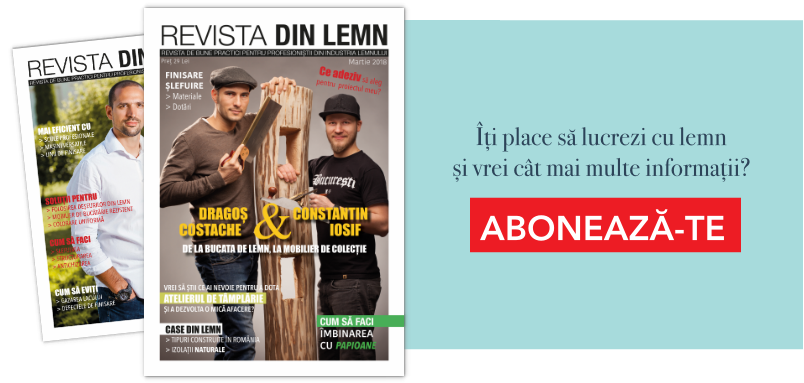


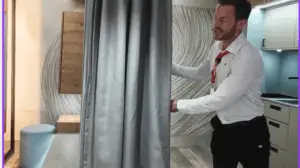
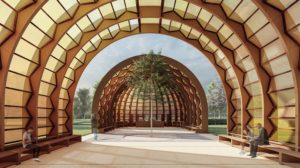


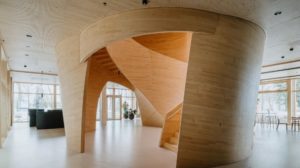





Hello,
We have an interior wooden staircase made by us, from beams, not special stair treads. It creaks quite a bit - do you think anything can be done with an oil? Or should it be changed?
Thank you!
Hello.
In general, the creaks in the stair treads are due to the way of fastening and to the fact that the wood, over time, changes its dimensions and no longer has the same position in the fastening system, resulting in friction. Oil will not stop it from creaking.
All the best!
Hello, I'm building a house on wood structure and I want to know if I can put floating steps and how to make their fastening in the sandwich tarpaulin.
Thank you,
Good evening!
Yes, they can. There are special connectors that attach to the wooden frame of the house.
Below is an article about a house built by Litarh in France, which has such stairs.
All the best!
https://revistadinlemn.ro/2018/08/13/un-producator-roman-le-a-indeplinit-visul-de-a-avea-o-casa-in-apropiere-de-paris/
Thank you very much!